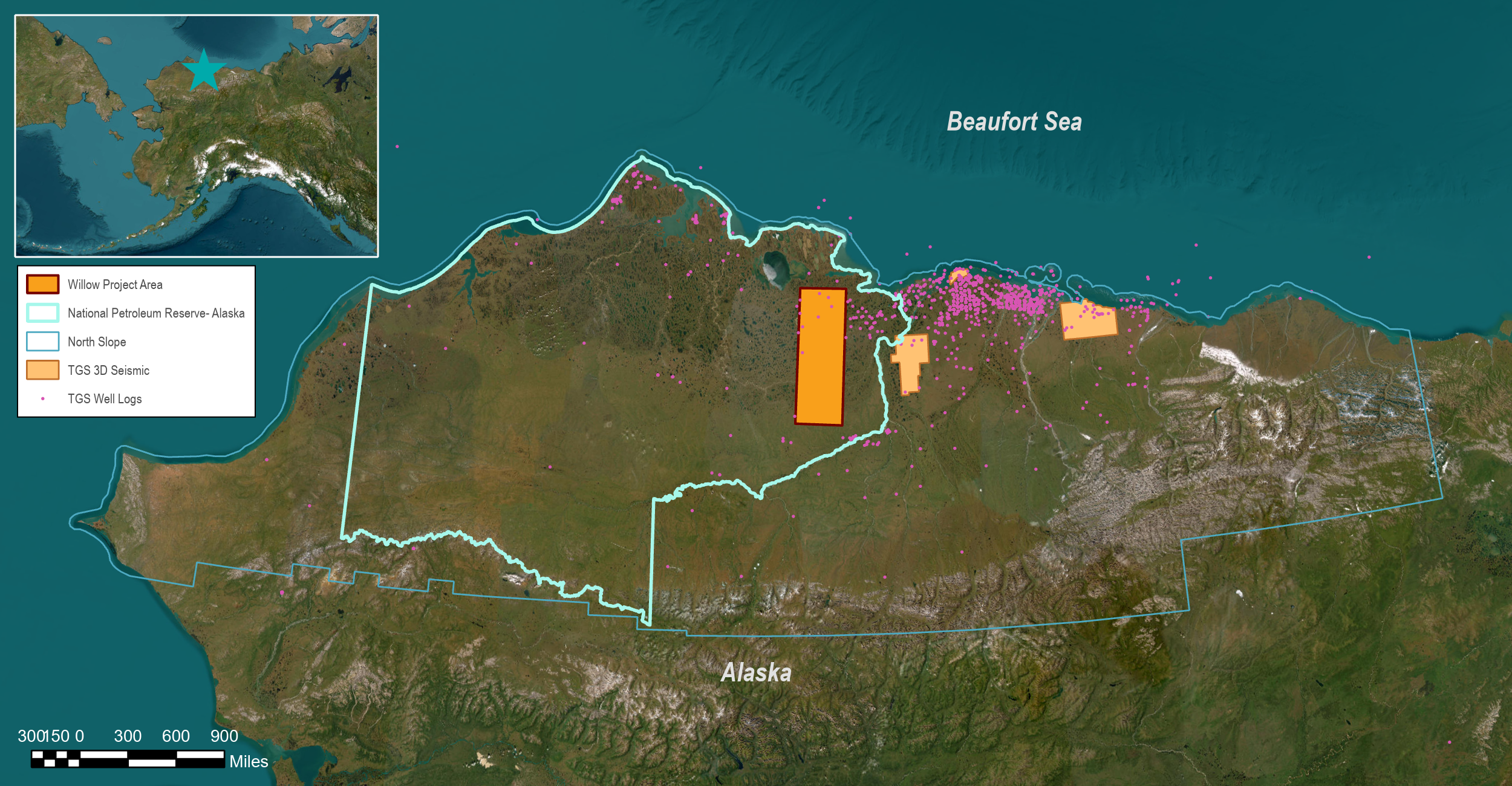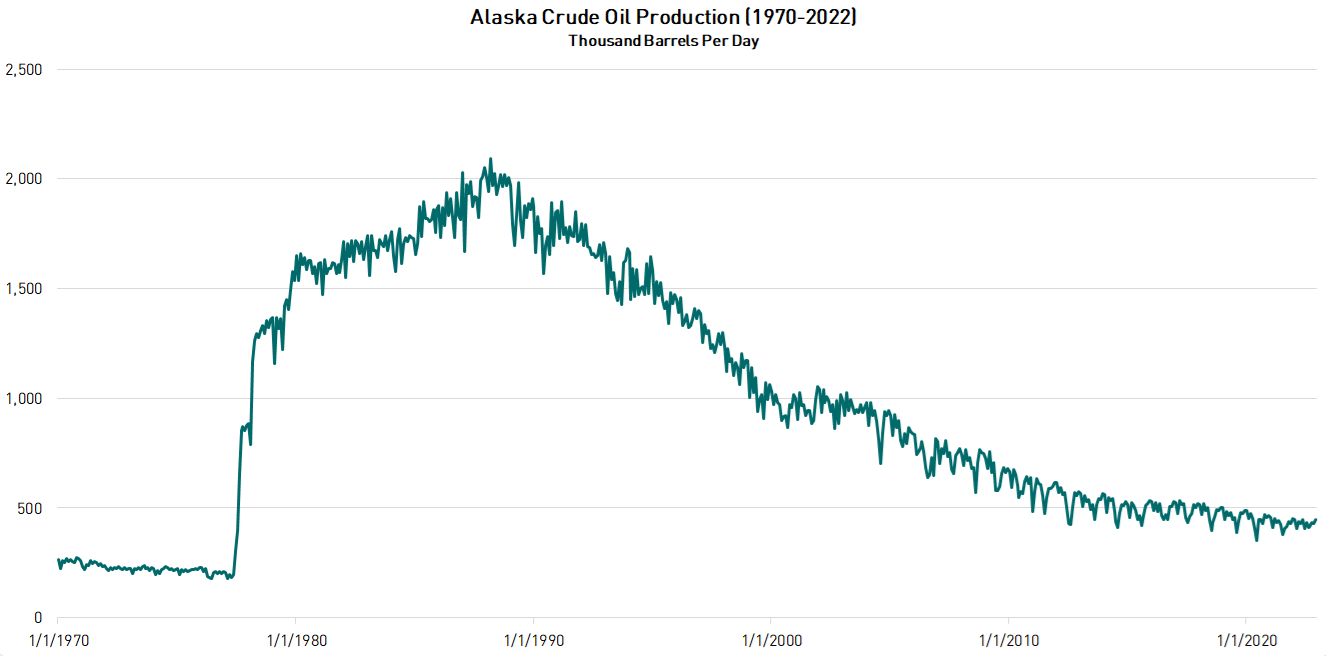Is a North Slope renaissance on the horizon?
Last Monday, the Biden administration formally approved a massive oil project in Alaska known as Willow. The project was announced in 2017, and approval has spanned five presidential administrations. The Willow project is in the Bear Tooth Unit northeast of the National Petroleum Reserve-Alaska (NPR-A). The project is expected to produce approximately 600 million barrels of oil equivalent over its lifespan. It is estimated to produce ~180,000 barrels of crude oil per day at its peak in FY2030. In addition to much-needed production growth in the state, Willow is anticipated to create as many as 2,500 construction jobs and 300 permanent jobs. It could also generate between $8 bn and $17 bn in new revenue for the federal government, the State of Alaska, the North Slope Borough, and communities in and around the area.
At its peak in the late 1980s, Alaska produced approximately 25% of total U.S. crude oil. This share has been declining ever since, and according to TGS Well Data Analytics, Alaska now produces approximately 450,000 barrels of crude daily, or less than 1% of total U.S. oil production. Nevertheless, Alaska's oil and gas production revenues account for ~68% of the total revenue collected in the state for the fiscal year of 2022, putting additional pressure on future oil and gas project development. Permit activity has also risen since 2017, growing from basically no permits to an average of 115 new permits per year since then, according to TGS data. (Besides tracking permit activity and production data, TGS has also recently acquired 3D seismic programs on the North Slope: Kuukpik, Aklaq, and CRD. The seismic area encompasses 2,114 square kilometers and provides high-resolution imaging to assist companies in further evaluating new reservoir targets and rejuvenating historical discoveries.)
ConocoPhillips, Alaska's largest oil producer, will be responsible for executing the project, which consists of three drill sites (BT1, BT2, and BT3) and associated infrastructure, including the Willow processing facility, operations center, and airstrip. Oil production will be transported by the Trans-Alaska Pipeline System (TAPS) to the warm-water port at Valdez on Alaska's southern coast, contributing to keeping the pipeline economically viable. On average, about 499,700 barrels of oil flow through the Trans-Alaska pipeline daily, well below the late-1980s peak of 2.1 million barrels.
Unless the recent decision is contested in court, with the Willow project finally getting approved and permit activity rising in the last five years, a North Slope revitalization seems to be in the making.




